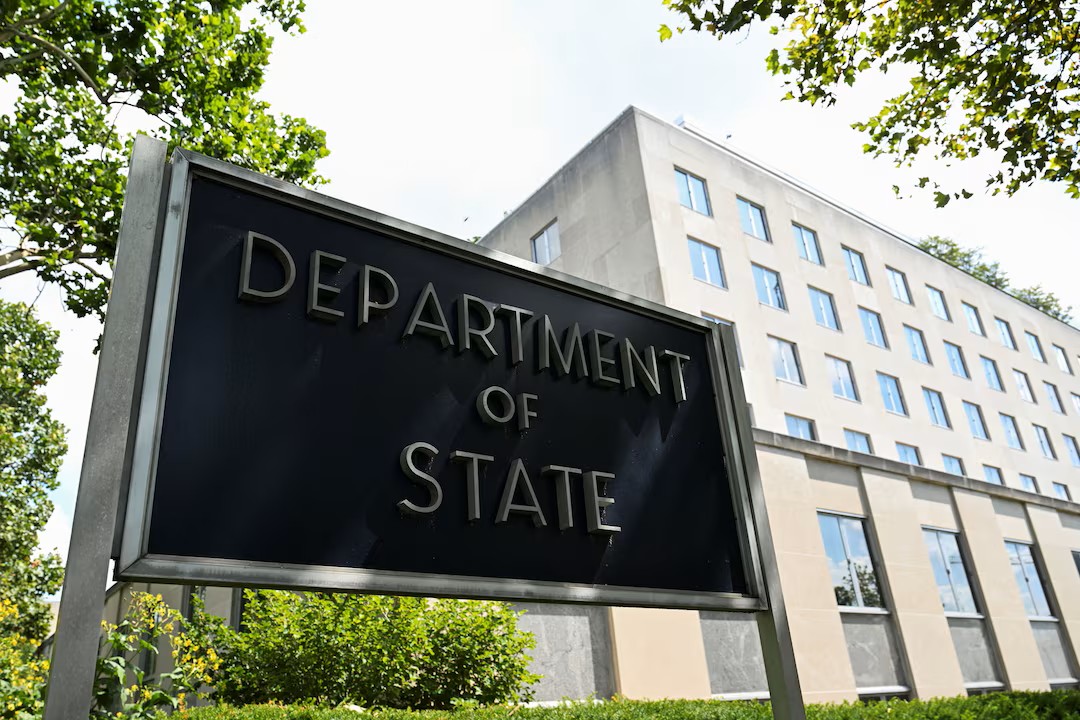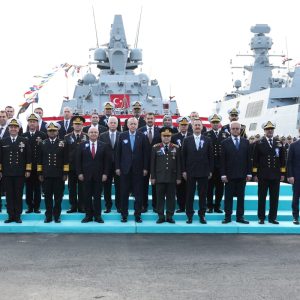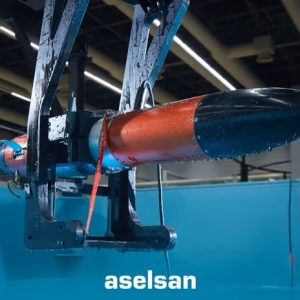Why Washington’s reinterpretation matters now
The State Department has approved a U.S. drone export policy shift that reclassifies large armed unmanned aerial systems (UAS) like the MQ‑9 Reaper as aircraft—handled similarly to F‑16‑class fighter sales—rather than as missile systems under the 1987 Missile Technology Control Regime (MTCR) [1]. The change, signed off by Secretary of State Marco Rubio, is designed to accelerate Foreign Military Sales (FMS) of advanced drones to close partners, with immediate implications for Riyadh’s spring request for 100+ MQ‑9s—a package widely linked to a $142 billion U.S.–Saudi arms framework announced in May 2025 [1][2][3].
Beyond Saudi Arabia, the reinterpretation signals faster pathways for allies in the Pacific and Eastern Europe, as well as the UAE, to acquire U.S. long‑endurance UAS that previously faced MTCR Category I friction. U.S. industry—specifically General Atomics, Kratos, and Anduril—stands to benefit as their platforms move through standard FMS channels rather than exceptional licensing tracks [1][4][5].
Key facts
— The U.S. drone export policy shift treats large UAS like conventional aircraft in export reviews, mitigating long‑standing MTCR hurdles [1].
— Riyadh’s bid for 100+ MQ‑9s could be cleared as part of a $142 billion package unveiled in May 2025; other allies have pending interest [1][2].
— U.S. manufacturers aim to claw back market share from Israeli, Chinese and Turkish competitors that operate under lighter or different controls [1][5].
— The State Department says human‑rights and regional‑stability vetting remains in force; Congress retains notification and potential disapproval powers [1][3].
How we got here: from MTCR dilemmas to a doctrinal pivot
The MTCR was designed to curb the spread of delivery systems capable of carrying 500 kg payloads over 300 km, a definition originally aimed at missiles. As armed UAS matured, many were swept into Category I controls by function rather than design. That created decades of friction: U.S. allies wanted UAS with strategic endurance and precision strike potential, yet the United States constrained transfers for fear of proliferation and precedent. The result was predictable: non‑MTCR or differently‑interpreting suppliers filled the demand, eroding U.S. industrial and strategic leverage.
The Trump administration had already experimented with easing UAS exports (e.g., 2020 policy refinements for sub‑800 km/h systems). The current U.S. drone export policy shift extends that logic by moving Reaper‑class systems into the aircraft lane, with FMS as the default mechanism. That reduces procedural drag, aligns drones with established airframe sale norms, and reframes UAS not as quasi‑missiles but as platforms akin to crewed aircraft—albeit with distinct autonomy, payload, and basing considerations [1][3].
Strategic upside: alliance cohesion, industrial base, and deterrence
Alliance demand signal. Across NATO’s eastern flank and the Indo‑Pacific, partners seek persistent ISR (intelligence, surveillance, reconnaissance), maritime domain awareness, and precision strike at range. By lowering barriers, Washington reinforces coalition interoperability and standardization around U.S. datalinks, munitions and mission systems. That supports combined operations and reduces training and sustainment fragmentation.
Industrial competitiveness. The decision is also an industrial policy nudge. General Atomics’ MQ‑9 family competes head‑to‑head with Turkish, Israeli and Chinese offerings—from Baykar’s TB2/TB3 and TAI’s Aksungur/Anka‑Aksungur, to IAI’s Heron TP and CASC’s CH‑4/CH‑5. In markets where speed and financing win, the FMS track (with U.S. government backing) is a force multiplier. The U.S. drone export policy shift is thus as much about safeguarding the supply chain, jobs, and R&D velocity as it is about geopolitics [1][5].
Deterrence and availability. In theatres facing massed drone and cruise‑missile threats, long‑endurance UAS expand sensor coverage and complicate adversary planning. When combined with manned‑unmanned teaming (MUM‑T) and maritime ISR, Reaper‑class systems provide cost‑effective presence and rapid target acquisition, especially where air superiority is contested but not denied.
Risks and friction: QME, escalation, and compliance drag
Israel’s Qualitative Military Edge (QME). Any major transfer in the Middle East must be squared with U.S. statutory commitments to Israel’s QME. Even if the aircraft framing streamlines process, munitions integration, datalink architectures, and operational envelopes can be tailored to preserve QME. Expect Israel‑specific safeguards and phased capability releases.
Escalation pathways. The optics of fielding strike‑capable UAS at scale—especially in volatile theatres—can trigger counter‑moves: layered air defence buys, anti‑access tactics, or competitive drone proliferation. Policymakers will need to balance rapid delivery with end‑use monitoring and graduated capability sets.
Congressional oversight. Notification windows give lawmakers room to object on human‑rights, Yemen‑related, or regional‑stability grounds. While the aircraft framing reduces MTCR friction, it does not eliminate political veto points. Congressional holds, informal objections, or conditions on munitions packages could still slow roll marquee cases [1][3].
What changes tactically for buyers
FMS velocity and financing. Moving into the FMS lane tends to standardize timelines, pricing transparency, and life‑cycle support. It also opens U.S. export credit tools and bundled training packages. For buyers trying to stand up maritime ISR or border security quickly, this is decisive.
Integration with U.S. mission systems. Reaper‑class aircraft fold into common Link‑16, SATCOM and ISR exploitation chains. Partners that already operate U.S. aircraft gain economies of scale in training and sustainment. The U.S. drone export policy shift should also de‑risk future upgrades—e.g., sense‑and‑avoid, maritime radar pods, wide‑area motion imagery.
Operational concepts. Expect allies to pursue distributed basing and MUM‑T pairings, using UAS to cue artillery, surface vessels, or crewed fighters. For maritime nations, MQ‑9B SeaGuardian’s multi‑mode radar and AIS fusion aid anti‑smuggling, EEZ enforcement, and under‑horizon target detection—capabilities that dovetail with NATO’s renewed focus on maritime security.
The Saudi case study
Saudi Arabia’s request for 100+ MQ‑9s is the immediate litmus test. If green‑lit, it would likely stage deliveries to align with training pipelines, basing infrastructure, and munitions stockpiles, and could be partitioned across ISR‑only and armed configurations to manage risk. Given the $142 billion umbrella, Riyadh could bundle ground control stations, simulators, weapons, and sustainment support under a multi‑year construct—similar to recent FMS megadeals but tuned to UAS.
For Washington, the payoff is leverage: standardizing a key partner on U.S. mission systems while crowding out non‑aligned suppliers. The trade‑off is political: Yemen and civilian‑casualty concerns will drive calls for strict end‑use monitoring, geofencing of strike profiles, and transparency on target‑development chains.
Outlook: a faster lane—but not a free‑for‑all
Reframing drones as aircraft under FMS creates a faster lane, not a free‑for‑all. The U.S. drone export policy shift will accelerate deals where strategic alignment is strong and compliance is credible. Where politics is fraught, Congress and the interagency can still apply brakes through tailored capability releases, conditional munitions, or phased schedules.
For industry, the imperative is execution: reduce lead times, lock down supply chains, and offer modular payload paths that keep platforms relevant through the 2030s. For allies, the moment to secure production slots is now—before order backlogs and munitions constraints push delivery to the right.
“Treating UAS like aircraft rather than missiles is a paradigmatic shift. It acknowledges how partners actually employ these systems—persistent ISR nodes that can be armed—while keeping political safeguards intact.”
Internal link
For a broader view on autonomy at scale, read our analysis on the UK’s planned AI‑enabled drone swarms (Defence Agenda) [6].
References
[1] Reuters — U.S. reinterprets arms control pact to ease military drone exports, Sept. 15, 2025. Link
[2] Reuters — U.S. agrees to sell Saudi Arabia ~\$142 bn arms package, May 13, 2025. Link
[3] U.S. State Department — Policy update on the export of Unmanned Aerial Systems, Sept. 2025. Link
[4] Stars and Stripes — New U.S. policy clears way for expanded drone sales abroad, Sept. 16, 2025. Link
[5] The Jerusalem Post (Reuters wire) — U.S. changes arms control policy for drone manufacturing, Sept. 16, 2025. Link
[6] Defence Agenda — UK to field AI drone swarms within five years (analysis). Link
Further Reading
— Missile Technology Control Regime (MTCR) — official documentation and guidelines. mtcr.info
— CSIS — The Future of U.S. Drone Exports under MTCR. csis.org
— Defence Agenda — DSEI 2025: The fighter market shift to MUM‑T. defenceagenda.com/dsei-2025











